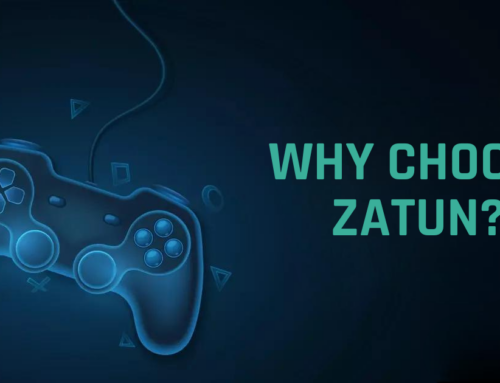A Step-by-Step Guide to Outsourcing 3D Game Art Without Losing Quality
Here’s the nightmare every game developer has had: You’re scrolling through your outsourced 3D models, and they look… fine. Not bad, exactly, but not the jaw-dropping quality you see in your favorite AAA games either. They’re generic. Lifeless. The kind of assets that scream “budget production” the moment players see them.
But here’s what’s crazy—some of the most stunning games you’ve ever played were made almost entirely with outsourced art. The Witcher 3? Heavy outsourcing. God of War? Same story. Cyberpunk 2077? Yep, outsourced assets everywhere.
So what’s the difference between outsourced art that elevates your game and art that makes it look cheap?
The process.
I’m going to walk you through the exact step-by-step system that successful studios use to get world-class 3D art from external teams. No more crossing your fingers and hoping for the best—this is how you guarantee quality every single time.
Step 1: Define Your Quality Standards (Before You Talk to Anyone)
Here’s where most studios mess up—they start shopping for 3D artists before they know what quality actually means for their project.
“High quality” means nothing. Seriously. It’s like saying you want food that tastes “good.” Good compared to what? McDonald’s? Michelin-starred restaurants? Your mom’s cooking?
Start by creating your quality benchmark:
Collect 10-15 examples of 3D art that represents your target quality. Not just pretty screenshots—actual 3D models you can examine closely. Look at polygon density, texture resolution, material complexity, animation quality if relevant.
Ask yourself these specific questions:
- What’s your target polygon count for characters? Environment pieces?
- What texture resolution do you need? 1K? 2K? 4K?
- How detailed should normal maps be?
- What’s your lighting setup, and how will it affect materials?
- Are you targeting mobile, console, or PC performance?
Create a visual quality guide. Think of it as your 3D art constitution. Include examples of acceptable vs. unacceptable quality levels. Show topology screenshots, wireframes, texture maps—the technical stuff that actually determines quality.
Pro tip: If you can’t define quality yourself, you’ll never get it from someone else. Period.
Step 2: Find Partners Who Actually Get 3D Art
Not all art outsourcing companies are created equal. Some specialise in 2D illustrations, others in mobile game assets, and some focus on high-end 3D work. Hiring a mobile-focused studio to create AAA console assets is like asking a food truck to cater a wedding—technically possible, but probably not what you want.
Look for these green flags in potential partners:
Portfolio depth over breadth: You want studios that have done 20 similar projects, not 20 different art styles. Consistency beats versatility when it comes to quality.
Technical understanding: Do they ask about your poly budgets? Texture streaming? Normal map baking workflows? If they’re not asking technical questions, they’re probably not technical artists.
Engine experience: Working with Unity assets is different from Unreal assets. Maya to 3ds Max workflows vary. Make sure they know your pipeline.
Recent work: 3D art techniques evolve fast. A portfolio from 2019 might as well be from the stone age.
How to actually evaluate them:
Don’t just look at pretty renders. Ask for wireframes, texture sheets, and technical breakdowns. A beautiful screenshot means nothing if the model is 50,000 polygons and crashes your game.
Request a paid test project. Have them create one character or prop using your exact specifications. It’s the only way to know if they can actually deliver.
Step 3: Create Bulletproof Technical Documentation
Here’s the harsh truth—if your technical specs are vague, your art quality will be too.
Most studios hand over a one-page brief and wonder why they get inconsistent results. That’s like giving someone the ingredients for a cake without the recipe and expecting a perfect dessert.
Your technical bible should include:
Modeling specifications:
- Exact polygon budgets for different asset types
- Topology requirements (quads vs. triangles, edge flow rules)
- UV mapping standards (texel density, seam placement)
- Naming conventions for everything
- File organisation structure
Texturing guidelines:
- Texture resolutions for each asset type
- Required texture maps (diffuse, normal, roughness, etc.)
- File formats and compression settings
- Colour space requirements
- Texture atlas organization
Quality benchmarks:
- Reference models that meet your standards
- Examples of unacceptable quality with explanations of why
- Screenshots of how assets should look in your engine
- Performance requirements (draw calls, memory usage)
Delivery requirements:
- File formats for final delivery
- Folder structure and organization
- Version control procedures
- Review and approval workflow
Make it visual. Screenshots, diagrams, and examples work better than walls of text. Your outsourcing partner might speak perfect English, but technical specs transcend language barriers when they’re visual.
Step 4: Establish Your Review and Feedback Process
Quality doesn’t happen accidentally—it happens through relentless iteration and feedback. But here’s the catch: bad feedback creates bad art, even from good artists.
Set up structured review milestones:
Concept/Reference stage: Before any 3D work begins, review and approve 2D concepts. It’s 10x easier to change a drawing than a finished model.
Blockout/Greybox review: Check proportions, scale, and basic form before detail work starts. This catches major issues early when they’re cheap to fix.
High-poly sculpt review: For detailed assets, review the sculpted version before retopology and texturing. This is your last chance to adjust major design elements.
Low-poly model review: Check topology, UV layouts, and how the model looks in your engine with basic lighting.
Final asset review: Complete model with all textures, tested in your actual game environment.
Give feedback that actually helps:
Be specific: “Make it more heroic” helps nobody. “Increase the shoulder width by 15% and add more angular design elements to the armor” gives clear direction.
Use visual markup: Screenshots with arrows and annotations eliminate confusion. Tools like Frame.io or even basic image editing work great.
Prioritize your feedback: Not all issues are equal. Tag feedback as “critical,” “important,” or “nice to have.” This helps artists focus on what matters most.
Set response time expectations: If you take a week to review work, don’t expect daily progress. Fast feedback enables fast iteration.
Step 5: Test Everything in Your Actual Game Engine
Here’s where dreams meet reality. Your 3D art might look stunning in Maya, but how does it perform in Unity? Those beautiful textures might be the wrong format for Unreal. That perfect character might have rigging issues that break your animation system.
Never approve assets based on renders alone.
Your testing checklist should cover:
Performance metrics:
- Frame rate impact when multiple assets are on screen
- Memory usage within your budget limits
- Draw call optimization
- LOD (Level of Detail) performance if applicable
Technical integration:
- Materials render correctly in your lighting setup
- Textures load and stream properly
- Models import without errors or warnings
- File sizes meet your distribution requirements
Gameplay integration:
- Characters fit through doorways and interact properly with environments
- Props scale correctly relative to player characters
- Collision meshes work as expected
- Animations blend smoothly with existing systems
Visual consistency:
- Art style matches your established look
- Lighting responds appropriately to your scene setup
- Colors remain consistent across different viewing conditions
Set up automated testing where possible. Create test scenes that can quickly validate new assets against your technical requirements. The faster you can spot problems, the faster they get fixed.
Step 6: Plan for Iteration (Because You’ll Need It)
Perfect art doesn’t happen on the first try. Ever. Even Pixar does dozens of iterations on their models, and they’re literally the best in the world at this stuff.
Smart studios plan for iteration from day one instead of treating revisions like failures
Build iteration into your timeline and budget:
Expect 2-3 rounds of revisions minimum for complex assets. Simple props might need just one round, but characters and hero assets often need more.
Front-load your review time. It’s better to catch issues early when changes are cheap than late when they’re expensive.
Create a revision tracking system. Document what changes were requested, when, and whether they were implemented correctly. This prevents issues from falling through the cracks.
Set clear revision limits upfront. Unlimited revisions sound great until you realize they can drag projects out forever. Clearly define what constitutes a “revision” versus a “scope change.”
Communication tips that actually work:
Use version numbering for everything. Asset_v01, Asset_v02, etc. It sounds basic, but version confusion kills more projects than you’d think.
Document decisions. When you approve something, write down WHY you approved it. Three weeks later, when someone questions the decision, you’ll be glad you have notes.
Celebrate good work. When your outsourcing partner nails something, tell them. Positive feedback creates better relationships and better art.
Step 7: Quality Control That Actually Controls Quality
Your final quality check isn’t just about catching mistakes—it’s about ensuring every asset meets the standards you established in step one.
Create a QC checklist that covers everything:
Technical validation:
- Polygon count within budget
- Texture resolution matches requirements
- UV mapping meets standards
- File formats correct for delivery
- Naming conventions followed
- Assets perform within frame rate requirements
Visual validation:
- Art style consistent with approved references
- Quality level matches established benchmarks
- No visible errors (Z-fighting, texture seams, etc.)
- Lighting responds appropriately
- Colors are accurate in target viewing conditions
Integration validation:
- Assets import cleanly into the game engine
- Materials and textures display correctly
- No conflicts with existing assets
- Performance impact acceptable
- File organization matches requirementsHave someone else do the final QC check. Fresh eyes catch things you’ll miss after staring at assets for weeks.
The Reality Check: This Process Takes Time
Let me be honest with you—following this process properly takes longer upfront than just sending off a brief and hoping for the best. You’ll spend more time on documentation, communication, and reviews.
But here’s the thing: you’ll spend that time anyway. Either upfront, when changes are cheap and manageable, or at the end when you’re panic-fixing everything three weeks before your deadline.
Studios that follow this process report:
- 60% fewer revision rounds
- 40% faster final delivery times
- 90% fewer technical integration issues
- Consistently higher art quality across projects
The ones that don’t? They’re the ones posting about their outsourcing nightmares on developer forums.
Your Next Steps
Ready to get started? Here’s your action plan:
This week: Create your quality benchmark document. Collect those reference examples and define your technical requirements.
Next week: Start researching potential partners using the criteria we discussed. Don’t rush this—the right partner makes everything else easier.
Week three: Reach out to your top 3-5 candidates for initial discussions and test project quotes.
Month two: Run paid test projects with your finalists. This investment pays for itself by avoiding bad partnerships.
Remember—outsourcing 3D art successfully isn’t about finding the cheapest option or crossing your fingers and hoping. It’s about creating systems that consistently produce the quality you need.
Your players won’t know or care that your art was outsourced. They’ll just see a game that looks incredible. And that’s exactly how it should be.
What’s been your biggest challenge with outsourcing 3D art? Are there specific quality issues you’ve struggled with? Let me know in the comments—I’m always curious to hear what’s working (and what isn’t) for fellow developers.




